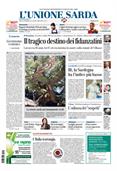Dogs mutilated for "beauty": the law prohibits it, but the trend persists.
Tails and ears are cropped to achieve an aesthetic that satisfies the owners but puts the animal's life at risk.Per restare aggiornato entra nel nostro canale Whatsapp
Cruel, unnecessary, and, above all, illegal practices. Tail and ear docking in dogs is one of those habits that, despite time and laws, has not yet completely disappeared. In Italy, such procedures are prohibited, but unfortunately, incidents like this continue to occur, leaving a wound not only on the animals, but also on the collective conscience.
Undoubtedly (it must be said) over the years, awareness and sensitivity towards animal welfare have grown, and with them, social condemnation of these mutilations. However, the cases that continue to emerge demonstrate that not everyone has abandoned certain outdated beliefs or practices. Caudectomy, or tail docking, and ear cropping are now considered genuine acts of violence, as they cause pain, stress, and permanent physical consequences. These procedures involve vital parts of the body—composed of skin, cartilage, blood vessels, and nerve endings—and can lead to post-operative complications, even serious ones.
They are prohibited by Article 10 of the European Convention for the Protection of Pet Animals, implemented in Italy by Law No. 201 of 2010. The text is clear: "Surgical operations intended to alter the appearance of a pet animal, or for other non-curative purposes, shall be prohibited, in particular docking of the tail, docking of the ears, cutting of the vocal cords, and removing claws or teeth." However, exceptions are permitted to protect the animal: when the operation is necessary for health reasons or to prevent reproduction. In any case, the decision rests solely with the veterinarian and must be made in the best interests of the animal, not the owner. Anyone who violates the rule—be it a breeder, a keeper, or even a veterinarian—is punishable by law.
Yet, despite the ban, some still choose to subject their dogs to procedures such as bilateral conchectomy, the cosmetic cropping of their ears. The breeds most affected are often the same: Dobermans, Pitbulls, and Dogo Argentinos. The underlying reasoning is purely aesthetic: an archaic and cruel logic that reduces the animal to an accessory, putting its life at risk.
